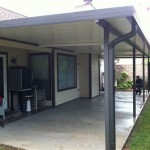Brick Patio Designs: A Comprehensive Guide
Brick patios offer a timeless aesthetic appeal and robust durability, making them a popular choice for outdoor living spaces. Their inherent versatility allows for a wide range of design possibilities, accommodating diverse architectural styles and personal preferences. This article delves into the various aspects of brick patio designs, exploring key considerations, pattern options, and installation techniques to provide a thorough understanding of this enduring landscaping feature.
Key Considerations Before Designing a Brick Patio
Prior to embarking on the design and construction of a brick patio, several critical factors warrant careful evaluation. These considerations significantly impact the overall success and longevity of the patio, influencing material selection, layout, and construction methods. Failure to adequately address these factors can lead to structural issues, aesthetic inconsistencies, and increased maintenance requirements.
Site Assessment: A comprehensive site assessment is paramount. This involves evaluating the existing soil conditions, drainage patterns, and topography of the area intended for the patio. Soil composition directly influences the required base preparation. Clay-rich soils, for example, retain moisture and necessitate more extensive drainage solutions than sandy soils. Identifying existing drainage issues is crucial to prevent water accumulation beneath the patio, which can lead to heaving, settling, and brick displacement. The topography of the site determines the need for grading or leveling to ensure a stable and even surface. Existing vegetation and underground utilities must also be identified and addressed to avoid disruption during construction.
Patio Size and Shape: The intended use of the patio dictates its optimal size and shape. A small patio adjacent to a doorway might suffice for a simple seating area, while a larger patio designed for outdoor dining and entertaining requires more substantial dimensions. The shape of the patio should complement the architectural style of the house and the overall landscape design. Rectangular and square patios are relatively straightforward to construct and offer a formal appearance. Curved or irregular shapes can create a more natural and organic feel, but require greater skill and precision during installation. Consideration should be given to incorporating existing landscape features, such as trees or flowerbeds, into the patio design.
Brick Selection: The choice of brick significantly impacts the aesthetic appeal, durability, and maintenance requirements of the patio. Bricks are available in a wide range of colors, sizes, textures, and materials. Clay bricks are the most common choice due to their natural appearance and durability. Concrete pavers, which mimic the appearance of brick, offer greater design flexibility and are often more cost-effective. The color of the brick should complement the house and surrounding landscape. Darker colors tend to absorb more heat, while lighter colors reflect sunlight and can help keep the patio cooler. The size of the brick influences the overall pattern and the amount of cutting required during installation. Texture can add visual interest and improve slip resistance. Consider the climate and anticipated usage of the patio when selecting the appropriate brick material.
Popular Brick Patio Patterns
The pattern in which bricks are laid significantly contributes to the overall aesthetic appeal and structural integrity of the patio. Different patterns offer varying levels of visual complexity and structural stability. The selection of a suitable pattern depends on the desired aesthetic, the skill level of the installer, and the type of brick being used.
Running Bond: The running bond pattern is one of the simplest and most common bricklaying patterns. Bricks are laid in rows with each brick offset by half its length from the brick in the row above and below. This creates a staggered joint that provides good structural stability. The running bond pattern is suitable for both rectangular and curved patios and is relatively easy to install. Its simplicity makes it a versatile choice for a wide range of design styles.
Herringbone: The herringbone pattern creates a visually dynamic and elegant look. Bricks are laid at a 45-degree or 90-degree angle to each other, forming a repeating zigzag pattern. This pattern is more complex to install than the running bond and requires precise cutting to ensure a consistent and uniform appearance. The herringbone pattern provides excellent interlock, enhancing the overall structural stability of the patio. It is particularly well-suited for formal gardens and patios where a sophisticated aesthetic is desired.
Basketweave: The basketweave pattern creates a woven effect by alternating pairs of bricks laid horizontally and vertically. This pattern is relatively simple to install and offers a clean, geometric look. The basketweave pattern is less structurally stable than the running bond or herringbone patterns and may require additional edge restraints to prevent brick displacement. It is a good choice for smaller patios and walkways where a subtle and understated design is desired.
Circular: Circular patterns are often used to create focal points or define specific areas within a patio. Bricks are arranged in concentric circles, radiating outward from a central point. This pattern requires precise cutting and careful planning to ensure a uniform and aesthetically pleasing result. Circular patterns are well-suited for creating a sense of intimacy and can be used to highlight features such as a fire pit or water feature.
Brick Patio Installation Techniques
Proper installation is crucial to the long-term durability and stability of a brick patio. A poorly installed patio will be susceptible to settling, heaving, and brick displacement, requiring costly repairs. The following steps outline the key aspects of brick patio installation.
Excavation and Base Preparation: The first step involves excavating the area to a depth sufficient to accommodate the base materials and the brick. The depth of excavation depends on the soil type and the anticipated load on the patio. A general guideline is to excavate to a depth of 6 to 12 inches. After excavation, the soil should be compacted using a plate compactor to create a firm and stable subgrade. A layer of geotextile fabric is then laid over the compacted subgrade to prevent soil migration and improve drainage. A base layer of crushed stone or gravel is then installed, typically 4 to 8 inches thick. The base material should be compacted in layers to ensure proper compaction and stability. This crucial base provides a level, well-draining foundation for the brick.
Laying the Brick: Once the base is prepared, a layer of bedding sand is spread evenly over the base material. The bedding sand should be approximately 1 inch thick and compacted using a hand tamper. The bricks are then laid on the bedding sand according to the chosen pattern. A rubber mallet is used to gently tap the bricks into place, ensuring that they are level and evenly spaced. Spacers can be used to maintain consistent joint widths. Edge restraints, such as plastic edging or concrete curbing, should be installed around the perimeter of the patio to prevent brick displacement and maintain the shape of the patio. These restraints are essential for containing the brick and preventing lateral movement. If the patio abuts a building, proper flashing should be installed to prevent water intrusion.
Joint Sanding and Compaction: After the bricks are laid, sand is swept into the joints between the bricks. The sand should be clean, dry, and fine-grained. Several passes may be required to completely fill the joints. A plate compactor with a rubber mat is then used to compact the sand and settle the bricks into place. This process helps to lock the bricks together and prevent movement. After compaction, any excess sand should be swept off the patio surface. The joint sanding process is repeated as needed over time to maintain the stability and appearance of the patio.
Sealing (Optional): Sealing the brick patio is an optional step that can enhance its durability and appearance. A sealant helps to protect the brick from staining, fading, and weathering. It can also make the patio easier to clean. Sealants are available in a variety of finishes, including matte, semi-gloss, and high-gloss. The choice of sealant depends on the desired aesthetic and the type of brick being used. Prior to applying a sealant, the patio should be thoroughly cleaned and dried. The sealant should be applied according to the manufacturer's instructions. Regular cleaning and maintenance are essential to preserving the beauty and functionality of a brick patio.

Simple And Affordable Brick Patio Design Able Plan Mypatiodesign Com

Brick Patio Ideas Landscaping Network

Brick Patio Design S And Ideas

From Classic To Contemporary 40 Inspiring Brick Patio Ideas For Your Space Outdoor Designs Backyard Stone

Beautiful Brick Patio Ideas From The Area S Top Contractor

Brick Patio Ideas From Traditional To Truly Unique Watsontown

Brick Paver Patio Designs Bethesda Md Installation

Brick Paver Patio Design Ideas For Central New Jersey Homes Des Home Renovations

Brick Patio Ideas Landscaping Network

20 Charming Brick Patio Designs Courtyard Design Outdoor








